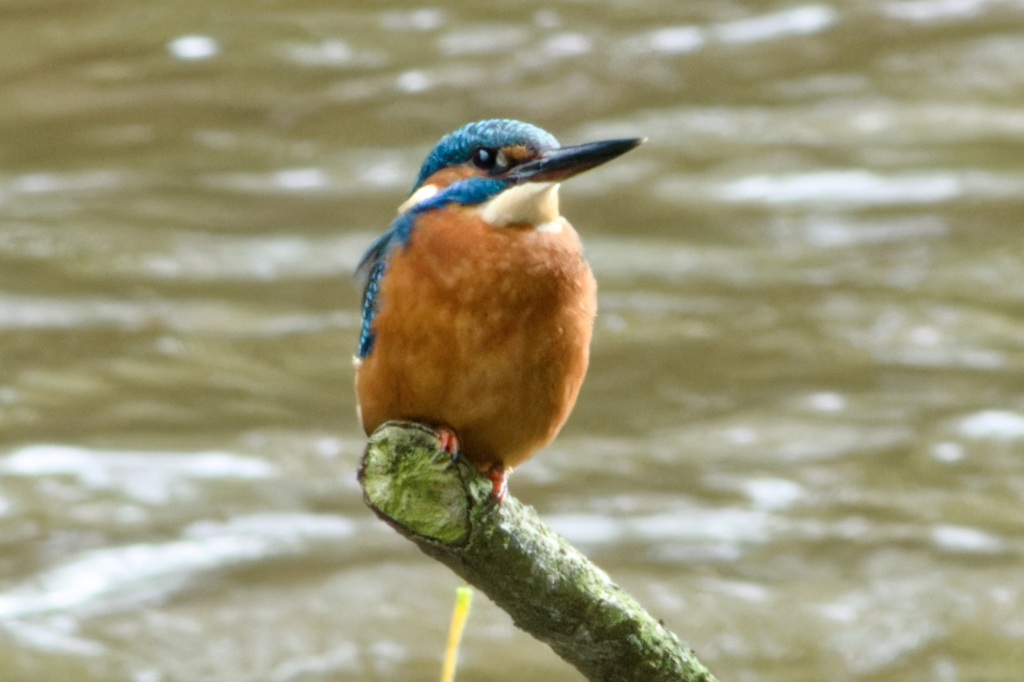
Backwoodsman visited RSPB Baron’s Haugh reserve recently, hoping to find something worth taking a photograph of. The Haugh was frozen and there wasn’t much about – a glance at the Facebook page reveals that others had been more fortunate but it is probably necessary to visit the reserve every day and Backwoodsman has other dances on his card. There was a large camo bloke with a bigger camera wedged in the corner of the Marsh hide with bggr all in front of him – he would be on watch for the Water Rail which seems to be appearing regularly. The Causeway hide was empty and Backwoodsman heard Wrens calling in stereo and settled down to wait. In time, one of the Wrens appeared in a good place and was enjoyed.
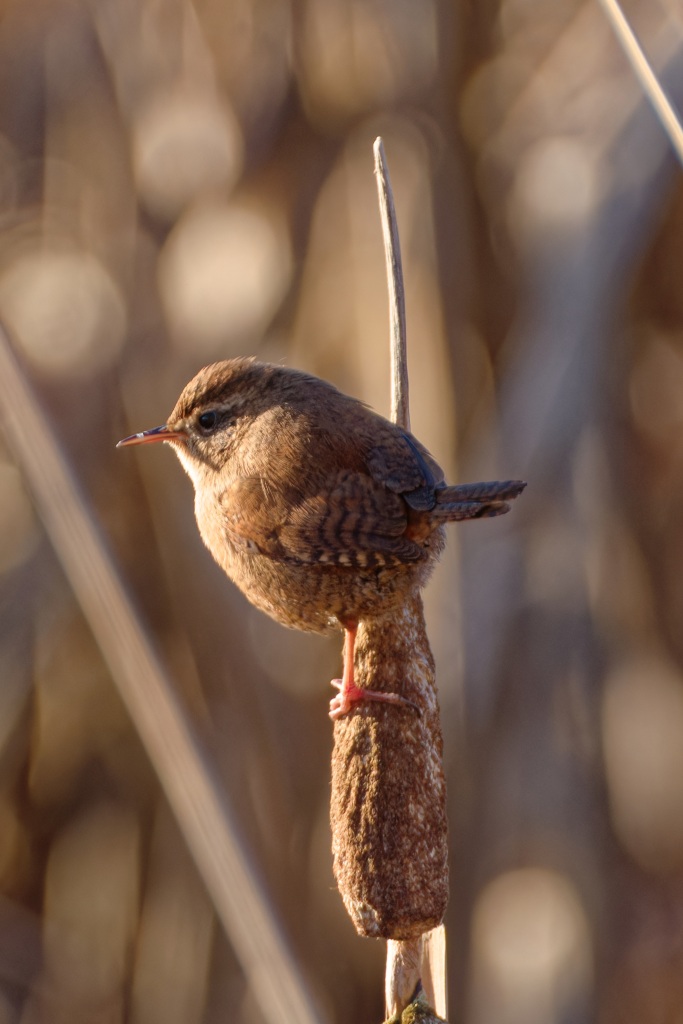
Backwoodsman then stoated about to no avail – after a couple of hours, enough was enough. At Airbles station, a commuter had emptied a bag of crisps on the platform and more birds came to eat than Backwoodsman had seen in a couple of hours at the Reserve. Just once, Backwoodsman will select a good day to visit Baron’s Haugh.
Alighting at Exhibition Centre around two o’clock, a frustrated Backwoodsman headed for the Kelvin at top speed. There is always Kingfisher chat from the Baron’s Haugh ‘bookers – the visit to the reserve had been made in the vain hope that a bird would turn up in front of a hide. The Kelvin has Kingfishers too. However, if Backwoodsman is on the river with the camera, the Kingfisher is not. This situation has prevailed since 2017 (when the image below, and the one at the top of the post were taken). Subsequent attempts to find the bird have been abandoned in the face of harassment by fellow residents.

The gear was unpacked and readied on the tables by InnDeep and Backwoodsman headed off upriver at top speed, head down, hat real low and hoping to discourage passers-by from telling him about Herons/Ducks/Moorhens.
It was quiet by the Old Flint Mill; Backwoodsman usually follows the path by the river but chose the Kelvin Walkway instead, and there, 20 metres along the channel was the little blue chap sitting on the stonework. Up went the camera, and off went the bird, but it went downriver towards the Flint Mill, into a smaller and secluded search area. Backwoodsman followed with all the stealth available to a part-frozen sexagenarian and there, on a pipe over a miserable looking culvert was the bird. So, at this point, the entire allocation of luck for the next year was probably burned but the bird stayed put, and did some fishing, returning to the perch with three-spined sticklebacks and performed the whole number of sitting there saying “who’s a pretty boy, then?”, bashing the fish on the head and then tossing it into the air and into the open bill. And still, no-one in a woolly hat came by and bellowed “Have you seen the Kingfisher??”, unprecedented.
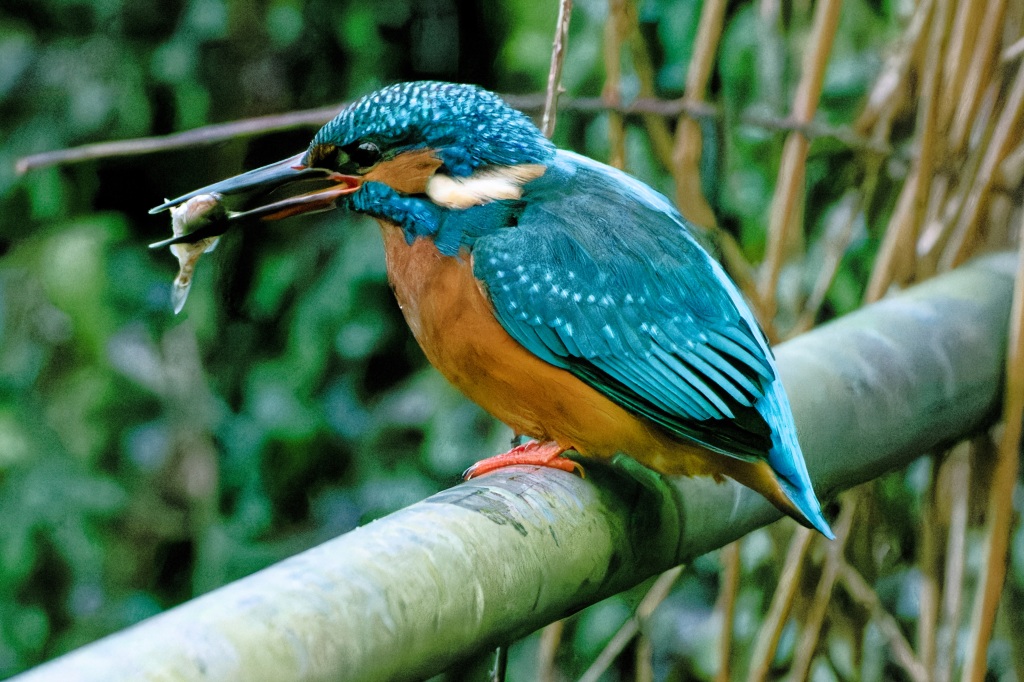
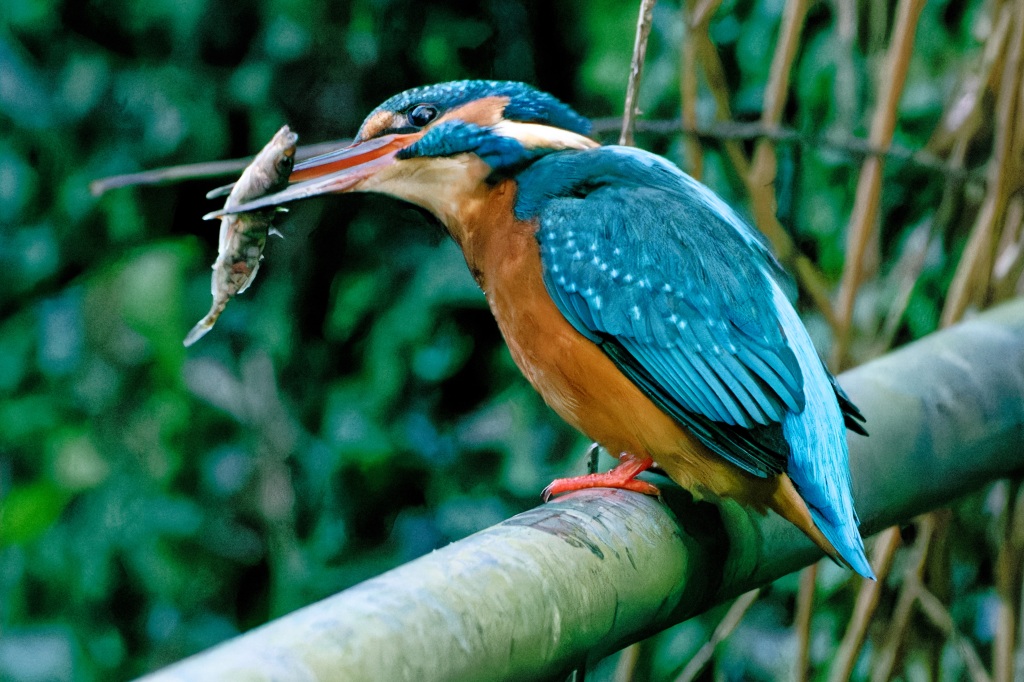
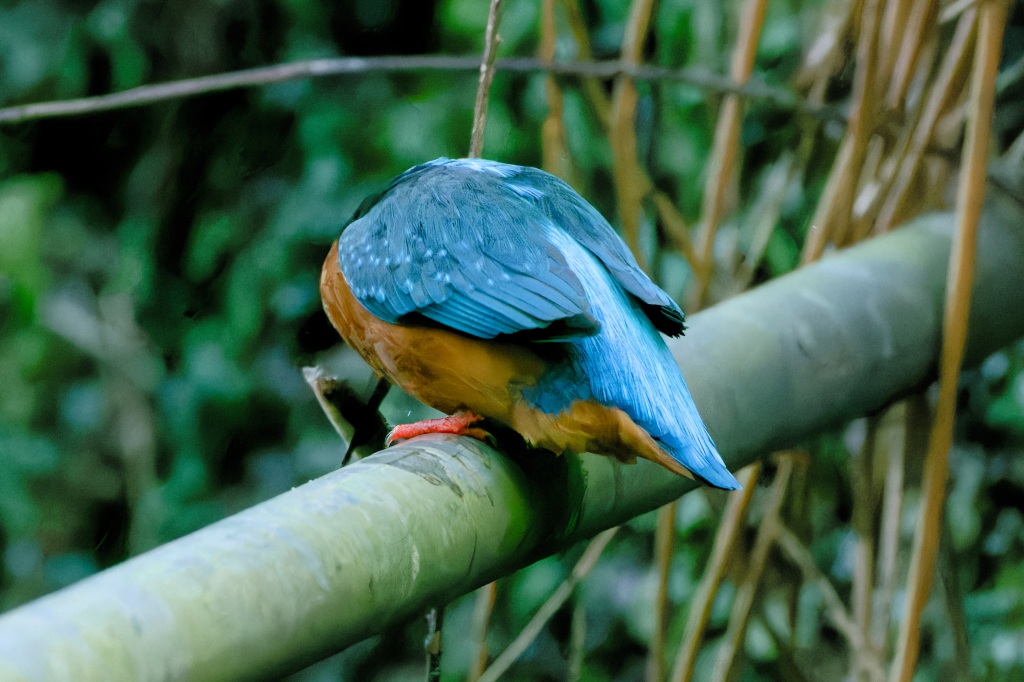
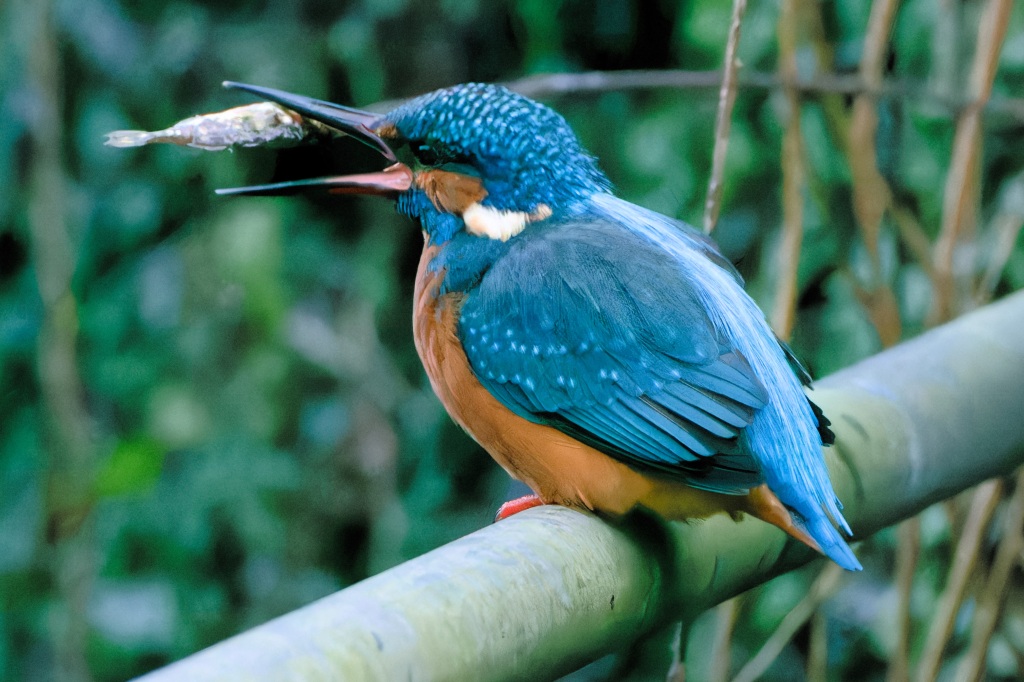
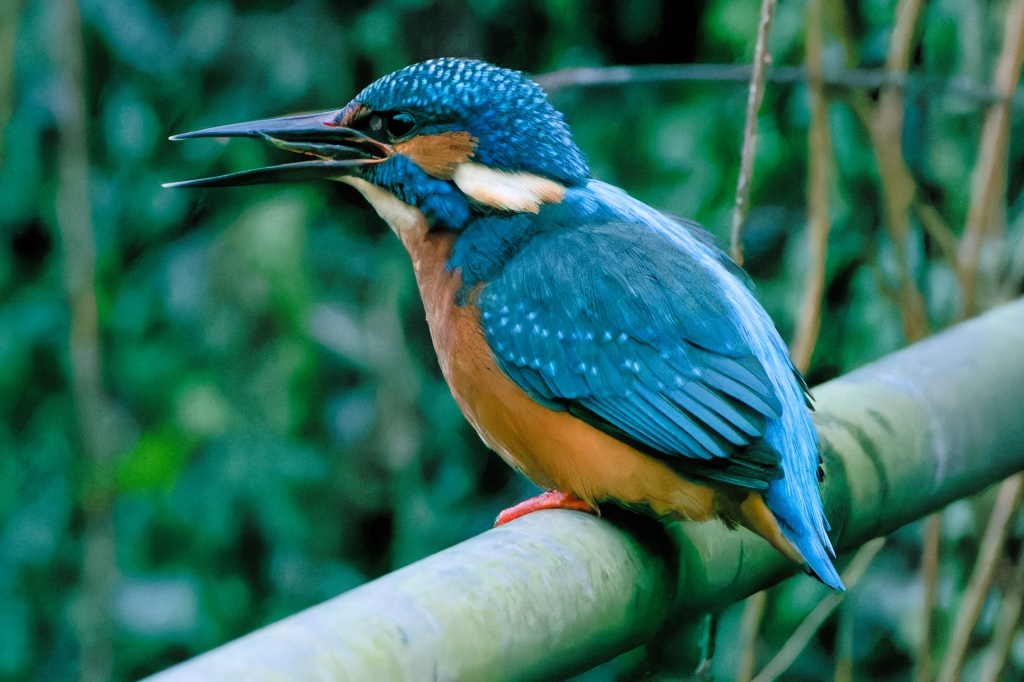
The bird then flew through the culvert and Backwoodsman followed and finally ran into a couple of numpties jabbering on about Otters. They did a bit of shouting and the bird headed upriver. Backwoodsman followed, with more shouting and arm waving from the numpties. No further contact was made with the bird that day – quelle surprise.
A word about the light – it was pure rotten. Backwoodsman doesn’t usually bother to process anything taken at ISO25600 but the de-noising software (DxO PureRaw) has achieved miracles with these images. Slowing the shutter was attempted but the bird was in dynamic motion; when it wasn’t hammering the fish against the perch, it was bobbing forward, so it was back to 1/1000th with the shutter.
So, the end of a six year quest? Not entirely – better light the next morning drew Backwoodsman out again. Same drill, camera ready, head down (still three reports of Herons to be fended off) and then a very slow prowl up the river from the narrows to the Belmont Bridge. Nothing yet, but the Kingfisher was half concealed under the Botanic Gardens bridge, without a gallery. Off he went upriver but not far; he seemed to like to perch on the metal rail around the big new drain outfall, so “thank you” to Scottish Water for the infrastructure.
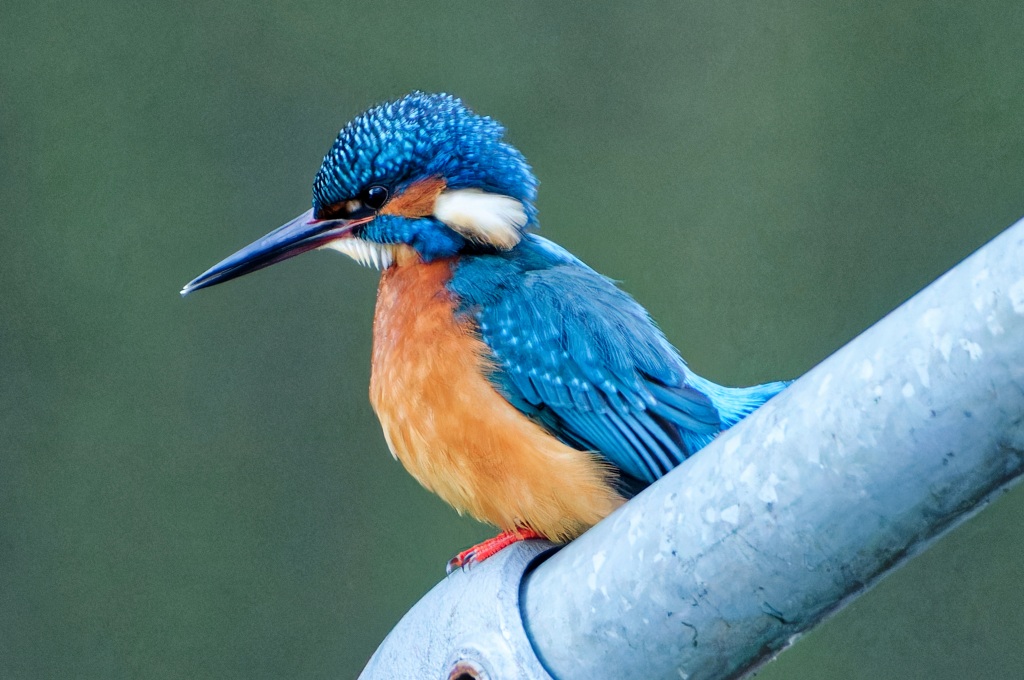


Backwoodsman stayed quiet and very still and enjoyed him for quite a while. Finally, the bird headed off upriver, calling, and Backwoodsman headed downriver (another 2017 image follows) and home, rather quietly, feeling humbled by his extremely good fortune.
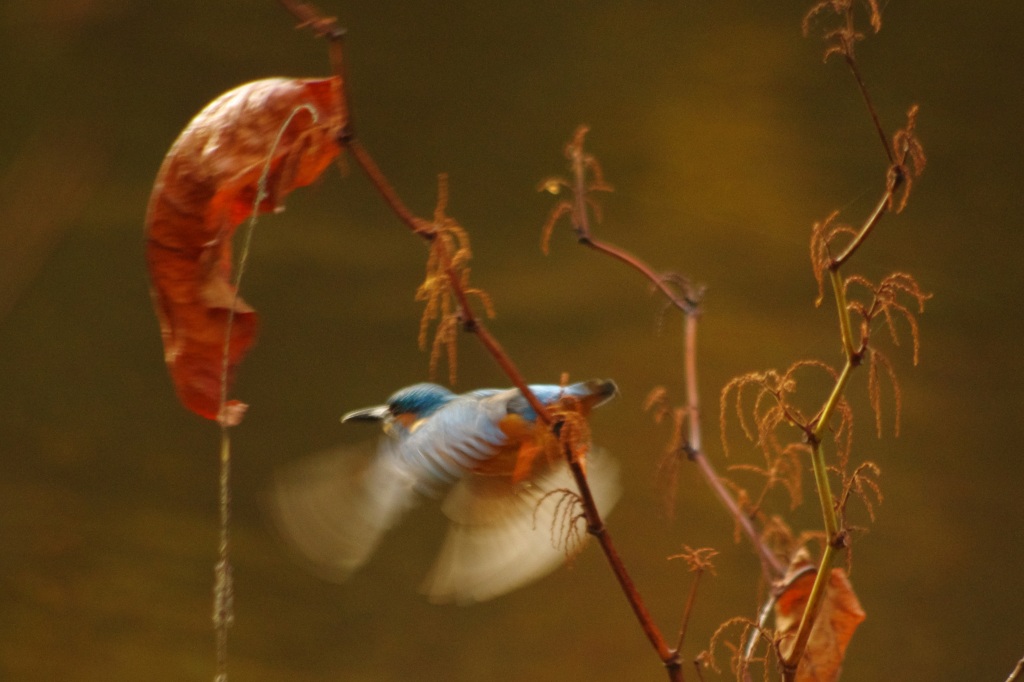
Apart from the rather obvious fish-catching agility of these birds, the headline would seem to be the brilliant colour – no other UK bird comes close for overall brightness. Backwoodsman did a little digging and found some nice overviews (two links here) of iridescence and an open access review and journal articles. The image below is borrowed from the review and is explained rather well here.
“Structural colour, which is seen in some bird feathers, butterfly wings or insects, is not caused by pigments or dyes, but internal structure alone. The appearance of the colour, whether matt or iridescent, will depend on how the structures are arranged at the nanoscale. Ordered, or crystalline, structures result in iridescent colours, which change when viewed from different angles. Disordered, or correlated, structures result in angle-independent matt colours, which look the same from any viewing angle.”
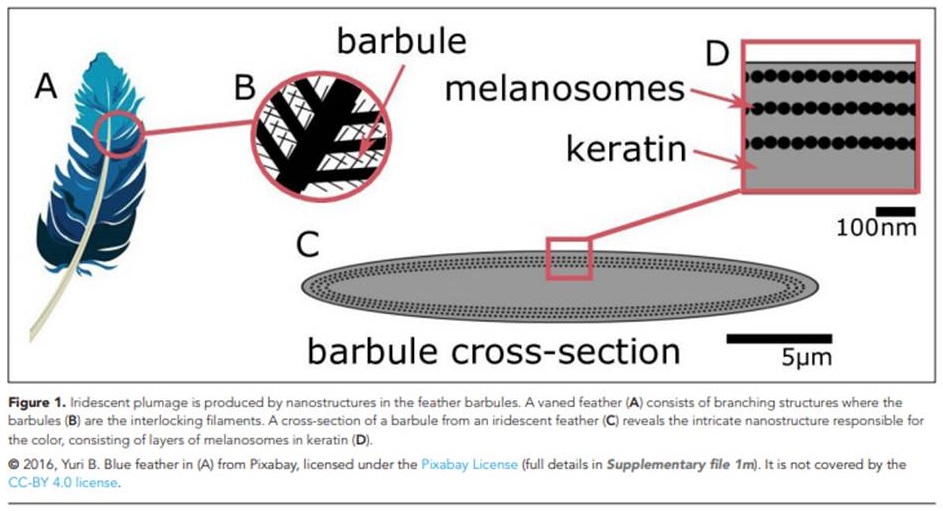
Many structural elements in different size domains are in play to produce this extraordinary effect and current science seems to be making considerable progress in explaining their interplay. Reading slightly more closely, Backwoodsman found this:
“Kingfisher feathers reflect light in a way that scientists describe as semi-iridescent. The feathers of peacocks and birds of paradise are truly iridescent. Iridescence is produced by the ways in which layers of material are perfectly aligned and repeated periodically to achieve a shimmer effect. Semi-iridescence is produced when the layers are not quite perfectly aligned but slightly disrupted, thus causing a smaller span of iridescent colour.”
In decent light, a Kingfisher looks brilliantly blue from any angle but there are bird colours which seem to depend strongly on the angle of observation. In these posts, Backwoodsman came up against the problem with the Teal speculum, something he attributed to photographic artefact, with the colour toggling between green and blue. Perhaps this arises from an intermediate level of order somewhere between the Kingfisher and the species which display shimmery iridescence (pigeons, for example)? Please note the different angles of incidence in the two images.

A glance at the Featherbase website reveals some striking differences in levels of blueness and brilliance between the different types of feathers worn by the Kingfisher.
Backwoodsman would like to add that there is an international page for posting Kingfisher sightings; it’s quite competitive but there is some really belting stuff on it, some of it of birds in motion, captured on cameras which take a lot of frames per second.
Backwoodsman may now move on to the Kelvin Otters of popular legend. They probably have their own Insta by now and the timing of photographic missions will require some cunning. Watch this space (but please don’t hold your breath).
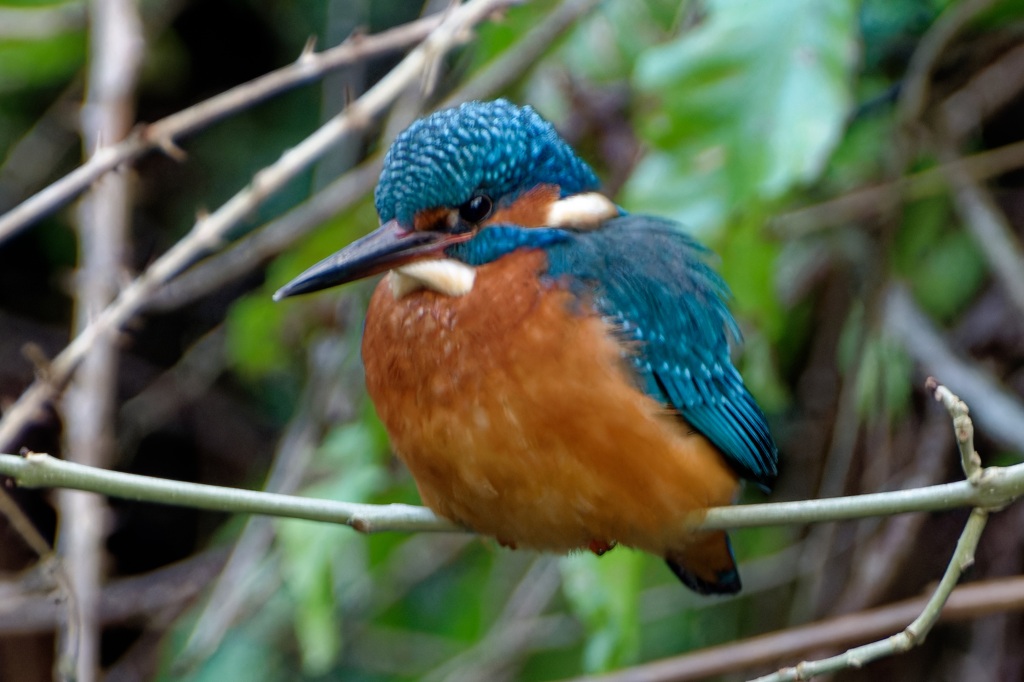
PS Backwoodsman likes a woodcut and found a delightful Kingfisher by Richard Allen.
